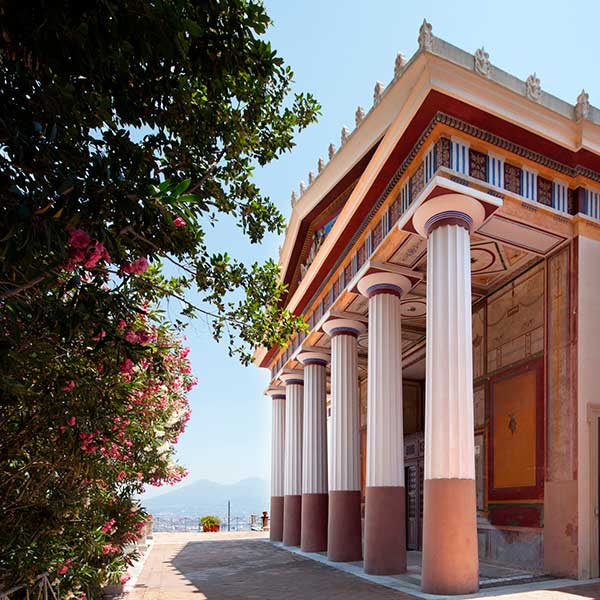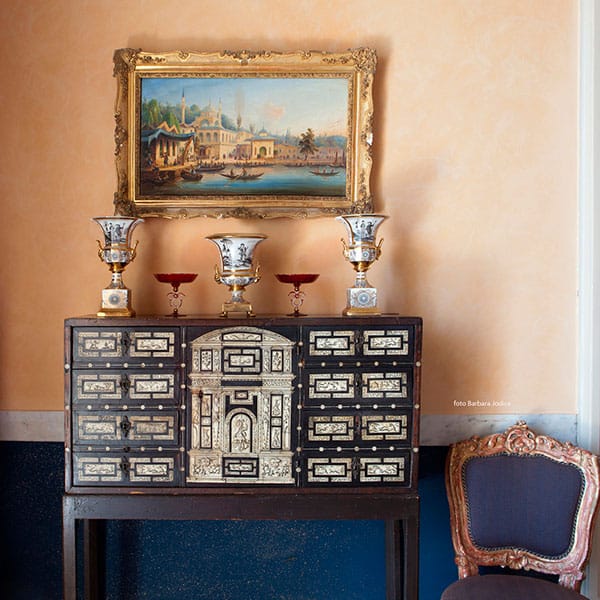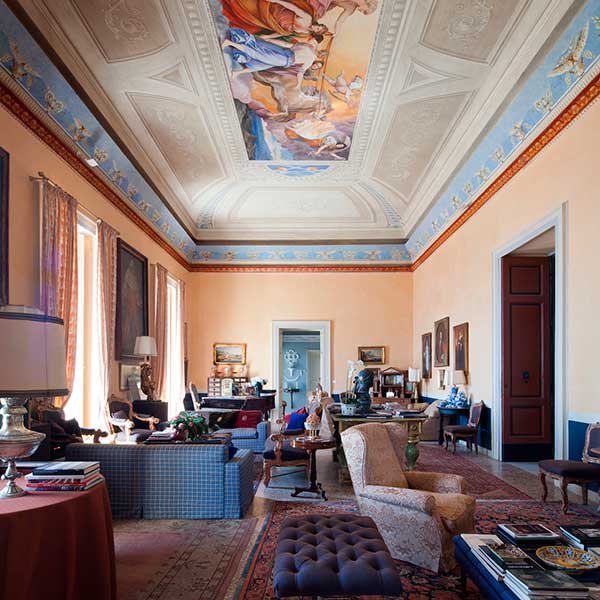Project Description
_Lucia Villa
Villa Lucia is a private Bourbon residence restructured in 1816 by commission of King Ferdinand IV (whose court architect was inspired by the polychrome facade of a Pompeian Doric temple), as a token of love for his second wife, Lucia Migliaccio, Princess of Partanna and Duchess of Foridia.
It is a beautiful historic residence that “dances” by virtue of its “party-goer” vocation, so much so that the entrance to the Villa is named “the Party Pavilion”, whose portal is decorated with the mythological Canovian Graces that invite you to dance in memory of the royal parties previously held in the halls which are furnished in neoclassical style and offer the spectacular panoramic terrace overlooking the gulf to the sea!
Another vibrant element to the history of Villa Lucia is the heterogeneity of the dwellings it has welcomed over the centuries: first a hilly refuge for Benedictine monks in the 1500s, then a romantic Royal nest for the two spouses until it became a meeting place for prominent intellectual and artistic figures on the political anti-fascist front during the 1900s.
“The cultural debates that were conducted in the villa closely followed all the most current movements from the artistic avant-garde to Existentialism, Hermeticism, psychoanalysis, and German, Soviet and American cinema and theater!”
Villa Lucia is a private Bourbon residence restructured in 1816 by commission of King Ferdinand IV (whose court architect was inspired by the polychrome facade of a Pompeian Doric temple), as a token of love for his second wife, Lucia Migliaccio, Princess of Partanna and Duchess of Foridia.
It is a beautiful historic residence that “dances” by virtue of its “party-goer” vocation, so much so that the entrance to the Villa is named “the Party Pavilion”, whose portal is decorated with the mythological Canovian Graces that invite you to dance in memory of the royal parties previously held in the halls which are furnished in neoclassical style and offer the spectacular panoramic terrace overlooking the gulf to the sea!
Another vibrant element to the history of Villa Lucia is the heterogeneity of the dwellings it has welcomed over the centuries: first a hilly refuge for Benedictine monks in the 1500s, then a romantic Royal nest for the two spouses until it became a meeting place for prominent intellectual and artistic figures on the political anti-fascist front during the 1900s.
“The cultural debates that were conducted in the villa closely followed all the most current movements from the artistic avant-garde to Existentialism, Hermeticism, psychoanalysis, and German, Soviet and American cinema and theater!”



